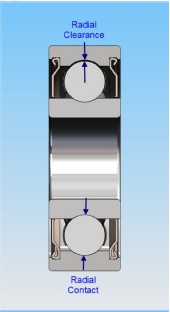To read part I of our series on bearings in power tools, click here.

A noisy and vibrating tool will quickly cause discomfort for its operator, particularly in factory or production environments where motion and operations are repetitive. In the case of ball bearings, noise and vibration are directly related to the quality of the materials used for the rings and balls, the internal manufacturing specifications and tight process controls.
Bearings used in these applications should be produced to Electric Motor Quality (EMQ) noise levels. EMQ standards are not uniform (except in China where there is a national standard) and vary from manufacturer to manufacturer, but the EMQ rating indicates they are suitable for use in electric motors.
Historically, electric motors must run quietly with little or no vibration, and this terminology came to be as a result. Manufacturers produce bearing components to strict specifications and employ various techniques to produce EMQ bearings.
Great care is taken to produce rings with near perfect geometry. Geometrical tolerances control features such as roundness, concentricity, run out and parallelism. Bearings with rings that have poor geometry tend to produce lower frequency noise and vibration.
Raceways (the tracks where the balls roll) are super finished to produce mirror like surfaces. High quality balls are also used, meaning they have good geometry, such as being perfectly spherical. Balls or raceways with poor surface finishes tend to produce higher frequency noise and vibration.
Certain lubricants can contribute to noise levels as well. The smaller bearings used in these hand tools require “clean” grease.
Manufacturers who produce EMQ bearings typically perform 100% noise testing of the bearings using specially designed equipment prior to final lubrication and packaging.
Power tool manufacturers must properly specify and apply preload to the bearings used in a power tool to reduce noise and vibration. One of the final steps in the bearing manufacturing process is the assembly of the individual bearing components: the outer ring, inner ring, balls and retainer (or ball separator). When the bearings are assembled, it is necessary to have a controlled amount of internal clearance, or looseness between the rings and balls. This is referred to as radial play in most bearing catalogs.
In power hand tool applications, this internal clearance must be removed for a pair of bearings to operate properly. The application of an axial load across the pair of bearings – for the purpose of removing free internal clearances – is called preload.
The application of axial preload forces the balls into contact with raceways, establishing a contact angle which causes the ball set to rotate in a uniform circumferential plane. Preload is critical in high-precision and high-speed power tool applications where speeds can reach as high as 60,000 RPM.
Here are links to the next installments of the series:

